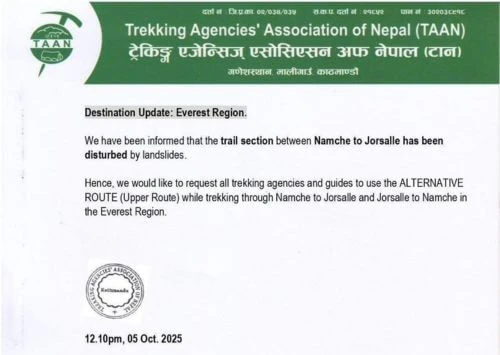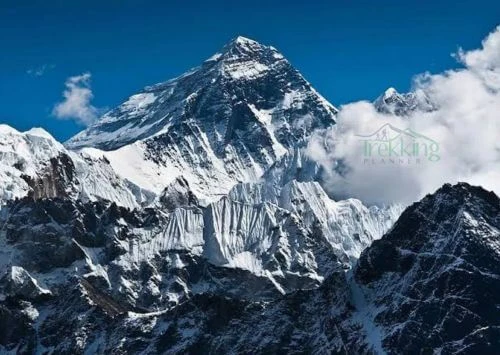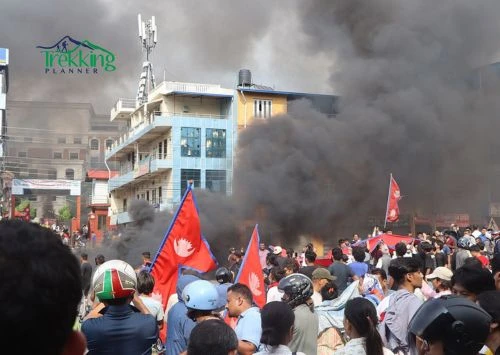Suppose you are tired of trekking in crowded areas and seeking a peaceful, off-the-beaten-path Himalayan experience. In that case, the Manaslu Base Camp Trek is the perfect option. The hidden gem of Manaslu Base Camp lies at the foot of Mt. Manaslu (8,163 meters), the world's eighth-highest mountain. The trek offers a mix of adventure and cultural immersion as it travels through waterfalls, forests, rocky terrain, Tibetan-influenced villages, and pure wilderness.
The Manaslu Base Camp lies in the Gorkha district of northern Nepal within the Manaslu Conservation Area. Unlike the classic treks like Everest Base Camp and the Annapurna Circuit Trek, the Manaslu Circuit is comparatively less popular. So, there are fewer crowds per season traveling to the base camp. With few visitors, the trek is remote, which serves its purpose to provide a peaceful and authentic Himalayan experience.
Once you are here, you can actually bond with nature. The forest areas, remote villages, suspension bridges, mani walls, and prayer flags allow a boost of confidence to travel further. Similarly, occasional views of snow-capped mountains bring joy along the route. Mountains such as Manaslu, Himalchuli, Ngadi Chuli, Annapurna II, Himlung Himal, Choe Himal, and others offer panoramic views.
The Manaslu Base Camp route typically starts from Soti Khola or Maccha Khola, depending on the itinerary. Following the Budi Gandaki River, the trek passes through numerous Gurung- and Tibetan-influenced villages, reaching the Base Camp near Samagaon. The route to Manaslu Base Camp is a challenging adventure; however, the trek offers a sense of wilderness and breathtaking mountain views. It is truly a testament to human determination and physical strength. With proper preparation, even moderately fit trekkers can safely conquer the adventure.
In this blog, we will discuss more about how to reach the Manaslu Base Camp. We will dive into the best route for the trek, its duration, road conditions, physical difficulty, altitude challenges, and required fitness level. By the end of this blog, you will understand the route, difficulty, and travel tips for completing the Manaslu Base Camp trek.
Ready to explore Manaslu? Check our Manaslu Base Camp package and start planning your adventure.
Where Is Manaslu Base Camp?
The Manaslu Base Camp, situated at 4800 meters, is the base of Mount Manaslu, located in the Gorkha district of Nepal. The Manaslu Base Camp is also within the Manaslu Conservation Area (MCA), which is home to some of the most exotic flora and fauna. Base camp is on the northern side of Mount Manaslu, closer to the beautiful village of Samagaon.
Geographically, the Manaslu Base Camp lies at 28.6018° N, 84.6208° E, at an elevation of 4,800 meters (15,748 ft) above sea level. Suppose you are starting the trek from Kathmandu, as most other trekkers do. In that case, you need to travel approximately 126 km west of Gorkha by road.
A private vehicle or bus ride will take you about 7-9 hours to reach Soti Khola or Machha Khola, the trek's starting point. From Soti Khola, you will cover about 110-120 kilometers to reach the Manaslu Base Camp. However, the distance depends upon the chosen itinerary and side trips.
Overview of Manaslu Region
The Manaslu Region is located between the Annapurna and Langtang Himalayan ranges. It is one of the 15 restricted areas of Nepal that requires a special permit to enter. The special permit for trekking towards the Manaslu region is known as the Manaslu Restricted Area Permit (RAP). In addition to the permit requirement, trekkers must have a government-licensed guide to navigate the route.
One of the Manaslu Region's prominent highlights is the Manaslu Conservation Area. With an area of 1,663 square kilometers, the Manaslu Conservation Area is home to some of the glamorous wildlife. The rich biodiversity within the conservation area, including endangered animals such as the snow leopard, red panda, musk deer, and Himalayan Tahr, makes it a renowned destination.
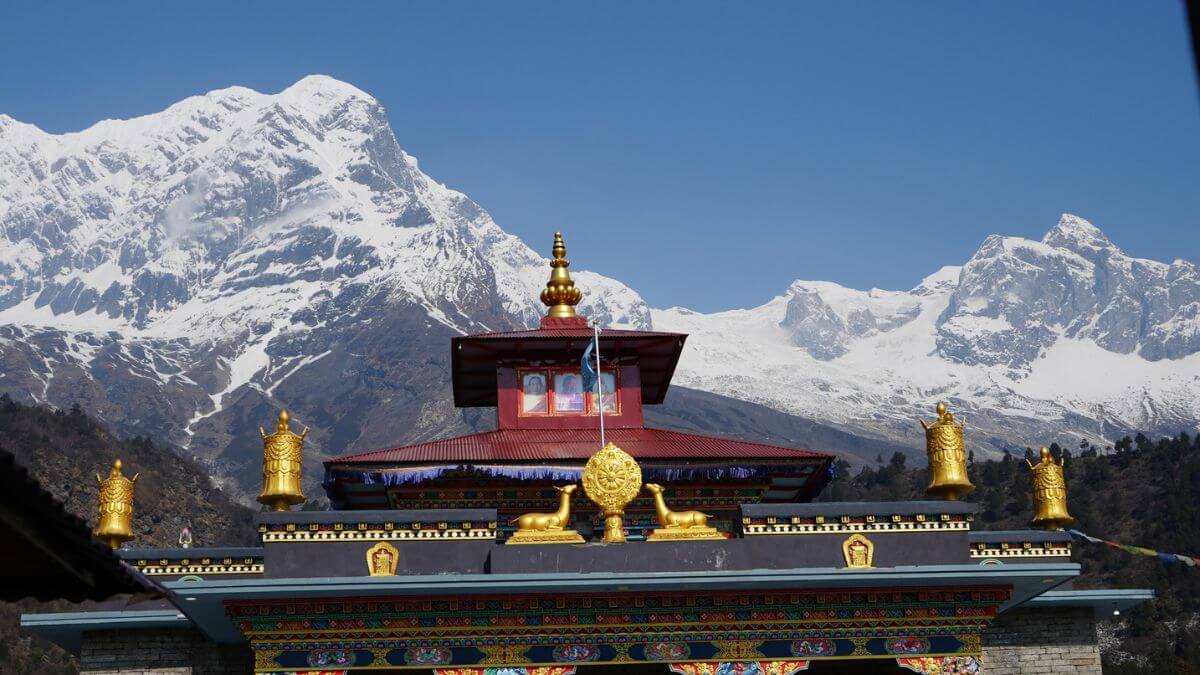
Along the route to Manaslu Base Camp, trekkers can encounter a blend of Hindu and Tibetan Buddhist culture. The abundant culture is reflected in the occasional presence of colorful monasteries, chortens, stupas, mani walls, traditional stone houses, temples, and trails lined with prayer flags or prayer wheels. As the Manaslu region is isolated from the rest of the world, it has preserved its cultural heritage, offering visitors a unique experience.
Best Routes to Reach Manaslu Base Camp
Trekkers reach Manaslu Base Camp while passing through some of the most scenic trekking trails of Nepal. However, with much more to explore in the area, trekkers can now customize their trekking itinerary to immerse themselves in the experience fully. The standard trekking route begins at Sama Gaon and leads to the base camp. However, depending on personal interests and a customized itinerary, the Manaslu Base Camp route branches into alternative routes.
Standard Manaslu Circuit Route
The standard Manaslu Circuit Trek itinerary lasts 14 days and begins with a drive from Kathmandu to Soti Khola. After reaching Soti Khola, trekkers will head to Manaslu Base Camp, passing through numerous villages along the way. The key villages along the Manaslu Circuit Route include Jagat, Deng, Namrung, and Samagaon. Here is an outline of the Manaslu Circuit Trek itinerary with trekking duration and distance.
Manaslu Circuit Trek Route Overview with Nepal Trekking Planner
- Day 1: Drive from Kathmandu to Soti Khola (710m/2,330ft), 7-8 hours/ Machha Khola (900m/2,950ft), 8-9 hours, approximately 160 km/99.41 miles
- Day 2: Trek from Machha Khola – Jagat (1,340m/4,390ft) - 6-7 hours, walking distance: around 20 km/12.4 miles
- Day 3: Trek from Jagat – Deng (1,860m/6,100ft) 6-7 hours
- Day 4: Trek from Deng to Namrung (2,630m/8,630ft) - 6-7 hours
- Day 5: Trek from Namrung to Lho (3180m/10,430 ft) - 6-7 hours
- Day 6: Trek from Lho to Samagaon (3,520m/11,580ft) - 6-7 hours
- Day 7: Rest day in Samagaon for acclimatization and exploration
- Day 8: Trek from Samagaon to Samdo (3,860m/12,660ft) - 4-5 hours
- Day 9: Trek from Samdo to Dharamsala/Larkya Phedi (4,460m/14,620ft) - 3-4 hours
- Day 10: Trek from Dharamsala/Larkya Phedi to Bimthang (3,720m/12,200ft) via Larkya La Pass (5,160m/16,930ft) - 8-9 hours
- Day 11: Trek from Bimthang to Goa/Ghoa (2515m/ 8251 ft) 5-6 hrs walk
- Day 12: Trek from Goa/Ghoa to Dharapani (1953m/ 6408 ft) 4-5 hrs. walk
- Day 13: Reserve Day for Contingency
- Day 14: Drive to Kathmandu (1,350m/4,429ft) via Besisar / Lamjung - 8-9 hrs.
Alternative Route (Direct to Base Camp)
While most follow the standard route, there are additional side trips that allow for a better trekking experience in the Manaslu region. Extending the trip to such a location allows for a deeper understanding of the area. You will not miss any prominent landmarks, so the trek is even more rewarding.
Many trekkers stop at Manaslu Base Camp, but those who want the full Himalayan experience choose the Manaslu Circuit with Larke La Pass.
However, it is not always necessary to extend the trip. For trekkers with limited time, they might need to finish the trek in fewer days. So, there are alternate routes that allow for direct base camp exploration within a few trekking days. To manage personal needs, the alternative routes are as follows:
Trekking from Samagaon to Manaslu Base Camp
Suppose you want to trek to Manaslu Base Camp without completing the whole circuit. In that case, you can do a shorter route that starts in Samagaon and ends at Manaslu Base Camp. Trekkers can start from Samagaon (3,530 meters), with a 6-7-hour round-trip to base camp and back. The trail begins with a steady climb to Birendra Lake and passes through glacial moraines to reach the base camp of Manaslu. The route often includes acclimatization days before commencing the Larkya La Pass crossing. This is an excellent adventure for trekkers with limited time but who wish to experience the base camp up close.
Tsum Valley Extension
Tsum Valley, in Manaslu, is an alternative to visiting Manaslu Base Camp. Those seeking a spiritual and cultural experience should consider exploring the Tsum Valley. The Tsum Valley itself is influenced by Tibetan culture, as it lies on the Nepal-Tibet border. Various monasteries, gompas, and chortens decorate Tsum Valley, and it is believed that Buddhist Saint Milarepa meditated in the caves of these mountains.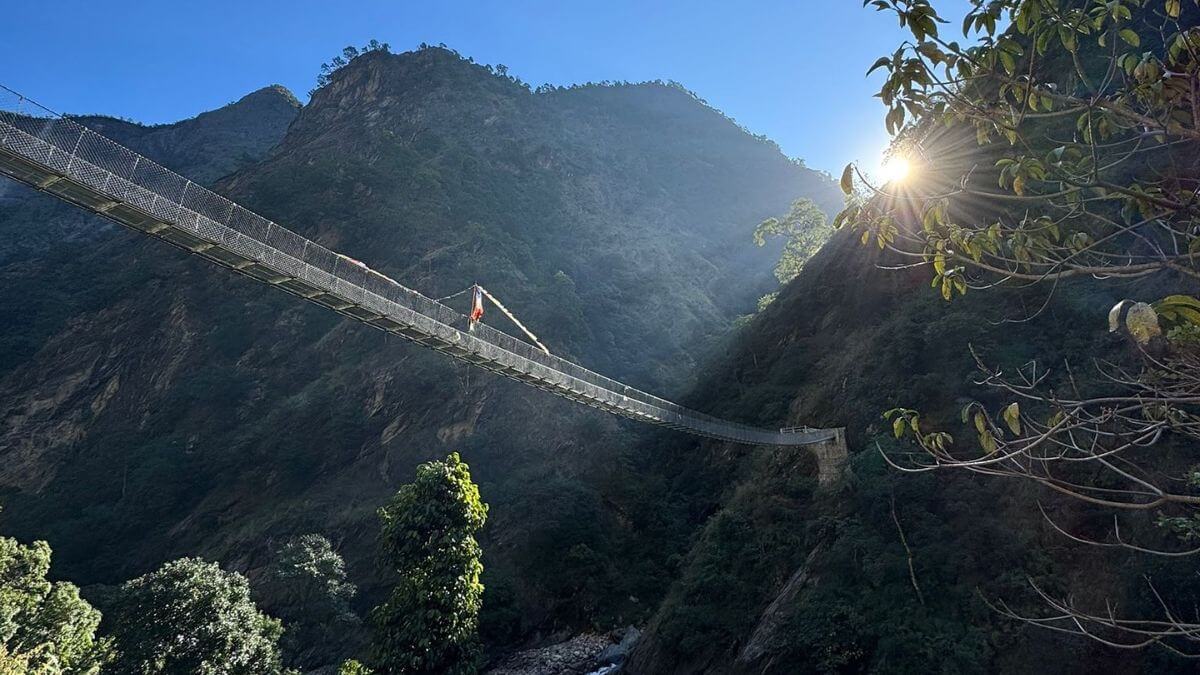
Also, visitors here can see breathtaking mountain scenery, including Ganesh Himal and Siringi Himal. The add-on trip to Tsum Valley during the Manaslu trek is about 5-6 days. These days, trekkers visit Tsum Valley and explore its highlights, including Mu Gompa, Rachen Nunnery, Milarepa Cave, and several traditional Tsum Villages.
Manaslu Tsum Valley Trekking Itinerary
- Day 1: Arrival in Kathmandu, 1,350 m / 4,430 ft, and transfer to the hotel.
- Day 2: Full day in Kathmandu with a half-day sightseeing tour at places of interest.
- Day 3: Drive to Maccha Khola (930 m / 3,051 ft) - 06 hrs. walk
- Day 4: Trek to Dobhan (1,070 m / 3,510 ft) via Tatopani (Hot Spring) - 06 hrs. walk
- Day 5: Trek to Philim (1,570 m / 5,151 ft) 06 hrs. walk
- Day 6: Trek to Lokpa (2,240 m / 7,349 ft) - 05 hrs. walk
- Day 7: Trek to Chumling (2,386 m / 7,828 ft) - 06 hrs. walk
- Day 8: Trek to Chhokangparo (3,031 m / 9,944 ft) - 06 hrs. walk
- Day 9: Trek to Nele (3,361 m / 11,027 ft) via Rachen Gompa -05 hrs.
- Day 10: Trek to Mu Gompa (3,700 m / 12,139 ft) -04 hrs.
- Day 11: Trek to Chhokangparo (3,031 m / 9,944 ft) -06 hrs.
- Day 12: Trek to Lokpa (2,240 m / 7,349 ft) -06 hrs. walk
- Day 13: Trek to Bihi Phedi (1,990 m / 6,529 ft) -06 hrs. walk
- Day 14: Trek to Namrung (2,630 m / 8,629 ft) - 05 hrs. walk
- Day 15: Trek to Lho (3,180 m /10,433 ft) -05 hrs. walk
- Day 16: Trek to Samagaon (3,530 m / 11,581 ft) -05 hrs. walk
- Day 17: Trek to Samdo (3,690 m / 12,106 ft) - 04 hrs. Walk
- Day 18: At Samdo, rest day for acclimatization and local excursion.
- Day 19: Trek to Dharamshala (4,470 m /14,665 ft) - 05 hrs. walk
- Day 20: Cross Larke La (5,215 m / 17,110 ft) and trek to Bhimthang (3,790 m/12,434 ft) -07 hrs. walk
- Day 21: Trek to Tilje (2,300 m / 7,546 ft) -06 hrs. walk
- Day 22: Trek to Tal (1,725 m / 5,659 ft) -05 hrs.
- Day 23: Trek to Baun Danda (1,250 m / 4,101 ft) -06 hrs. walk
- Day 24: Trek to Bhulbhule (840 m/ 2,755 ft) - 2 hrs, and drive to Kathmandu -07 hrs.
- Day 25: Final International departure from Nepal.
Not satisfied with the current itinerary? Contact us to customize your own personal itinerary for the journey.
How to Get to the Trailhead?
Transportation from Kathmandu to Soti Khola
The trek to Manaslu Base Camp starts with a scenic drive from Kathmandu to Soti Khola. Soti Khola, located in Gorkha district, lies about 126 kilometers northwest of Kathmandu. The road journey begins along the Prithivi Highway, passing through numerous local villages, riverbanks, waterfalls, and terraced farmland. Then, trekkers will continue along the off-road route to Arughat, finally reaching Soti Khola. The road section can be bumpy and dusty, especially in the monsoon season.
Bus vs Jeep Options
Local Bus Option: There are two means of transportation that trekkers can use to reach Soti Khola. As a budget-friendly option, trekkers can take a bus that departs almost every day. While the bus ride takes about 8-10 hours, depending on road conditions, there are occasional stops that lengthen the drive. Daily local buses depart from the Gongabu Bus Park in Kathmandu for Arughat or Soti Khola.
Jeep Option: Trekkers can take either a private or a shared jeep to Soti Khola. The shared jeep is cheaper than a private jeep; however, the private jeep is the most comfortable option for the journey. You can rent a four-wheeler jeep in Kathmandu through Nepal Trekking Planner or other private operators. Taking a jeep will take about 7-8 hours, depending on the flexibility of rest stops and photography breaks. If the road conditions are good, jeeps can sometimes drive as far as Machha Khola, allowing us to save a day of trekking.
Travel Duration and Road Condition
At approximately 126 kilometers, the drive takes 7-9 hours by jeep and 8-10 hours by bus. The road is paved up to Dhading Besi, and after that, trekkers need to ride along an uneven off-road trail to Soti Khola. The best time for the drive is from September to November or March to May, omitting the peak monsoon period.
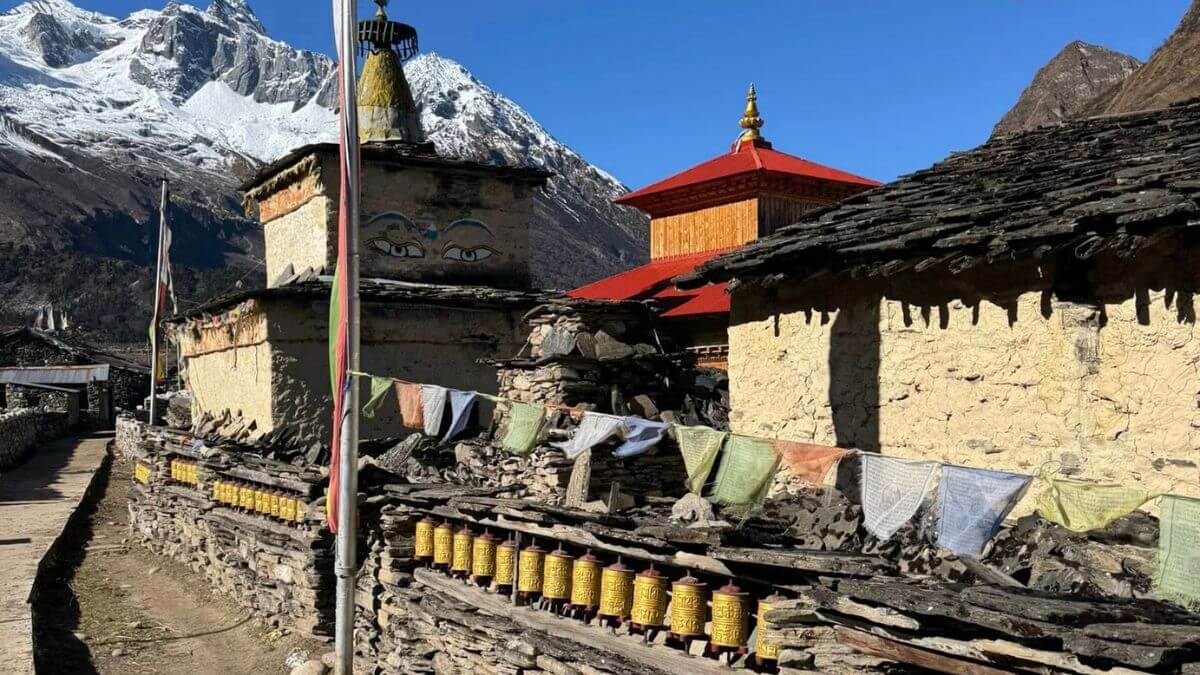
Difficulty Level of the Manaslu Base Camp Trek
The Manaslu Base Camp difficulty level is moderate to challenging. Trekkers need to walk 6-8 hours a day, depending on the day. Similarly, the walk traverses varied terrain, with steep climbs and descents that require adequate physical fitness. Trekkers need to be physically active, mentally strong, equipped with proper gear, and follow guidance to complete the trek safely.
Things That Measure Manaslu Trek Difficulty
Physical Difficulty: Trekking towards Manaslu Base Camp requires 5-8 hours of daily walking through diverse landscapes. The trekking trail includes walking in forested areas and stone steps in the lower region. At higher elevations, trekkers need to walk on rocky paths, through landslide areas, and across glacial moraines. By the time you reach the base camp, you will have gained over 4,000 meters in elevation, so the trek demands good endurance and leg strength. To cope with the physical challenge, trekkers need to go on regular hikes, climb stairs, and practice carrying a loaded backpack to stimulate trekking conditions.
Altitude Challenges and Acclimatization: One of the key challenges of Manaslu Base Camp Trek is altitude. As you rise above 2,500 meters, the air becomes thinner, making breathing difficult. Trekkers can experience rapid altitude gain once moving from Samagaon (3,530 m) to Manaslu Base Camp (4,800 m). If not prepared, an altitude challenge can cause Acute Mountain Sickness (AMS), also known as altitude sickness, which poses life-threatening risks.
To cope with altitude sickness, trekkers need to add acclimatization days in the itinerary. It is best to follow the "climb high, sleep low technique to adapt the body to low oxygen levels, especially at high altitude. Similarly, hydration is a key factor for adjusting to the altitude, and if the body shows any signs or symptoms of altitude sickness, be sure to recognize them and take immediate action.
Technical Challenges: The Manaslu Base Camp trek is not a technical mountaineering route. So, the trek doesn't require ropes or climbing equipment. However, as the path is steep and narrow, trekkers need to navigate it carefully. Similarly, some sections along the trail are affected by landslides and snow. So, trekkers must be alert when walking on such uneven terrain. Nepal Trekking Planner recommends using trekking poles and sturdy boots to maintain balance and reduce strain.
Required Fitness Level: You do not need to train like an athlete to complete the trek; however, the trek still demands a good level of physical fitness. Trekkers should be able to handle long ascents and descents while carrying a loaded backpack up to 10 kg. It is necessary to maintain a constant energy to cope with the terrain. So, focus on cardio exercises, strength training, and weighted backpack training.
Feeling overwhelmed by the full 25-day trek? Try our easier 10-day Lower Manaslu trek instead.
Recommended training and preparation
Cardiovascular Training: The Manaslu trek routes demand trekkers to have a strong level of cardiovascular endurance. Trekkers need to engage in cardio exercises at least 3-4 times a week. Engage in activities such as swimming, cycling, jogging, and running for cardiovascular fitness, gradually increasing both the duration and intensity of your workouts.
Strength training: Strength is a crucial factor for the Manaslu Trek in Nepal. The path to Manaslu Base Camp consists of steep ascent and descent. Besides, trekkers also need to walk on narrow trails, across glacier fields, and through mountain passes. So, to navigate such terrain, trekkers need to include strength training in their exercise. Heavy weightlifting is not necessary; instead, trekkers should focus on leg, core, and body exercises such as squats, lunges, crunches, planks, push-ups, and sit-ups. Follow the routine at least once or twice a week.
Weighted Backpack Training: Trekkers should practice walking while carrying a 7-10 kg backpack. Although porters will carry the duffel bags, trekkers themselves need to have day items. Water, snacks, clothing, a camera, and other personal items can significantly add to the weight. So, practice long-distance hiking with a weighted backpack to simulate the trekking experience.
Best Time to Trek to Manaslu Base Camp
Selecting the best time to trek to Manaslu Base Camp is essential for a safe, comfortable, and enjoyable experience. The trek is possible year-round; however, for the best experience, it is advisable to trek in Spring and Autumn. During these seasons, the weather is stable and the skies are clear, which provides a comfortable walking experience.
Spring (March to May)
The spring season in Nepal lasts from March to May. Spring is marked by blooming rhododendrons, which add vibrant colors to the landscape. The lush greenery motivates one to move forward, while the clear skies provide an excellent view of snow-capped mountains. The snow begins to melt at higher elevations, so visibility and navigation will improve. The average temperature at lower altitudes is between 10 and 20 degrees Celsius. In comparison, at higher altitudes it can drop to -5 degrees Celsius.
Advantages of trekking in Spring
- Blooming rhododendron and alpine forests add color to the landscape.
- Pleasant walking conditions with moderate temperature.
- Less crowded than the Autumn season, which offers a quieter experience.
- Clear skies with an unobstructed view of snow-capped mountains.
Disadvantages of trekking in Spring
- Crowded trails due to peak season, so accommodation options can be fully booked.
- An increase in trekkers increases demand, so the cost of food, lodging, and porter services rises.
- Spring afternoons can be cloudy, with brief showers and poor visibility.
- Viewpoints in Manaslu Base Camp can get packed with trekkers.
Autumn (September to November)
Autumn in Nepal lasts from September to November. It is the best time to trek to Manaslu Base Camp. The weather is stable, primarily with dry trails and clear skies. The view of snow-capped mountains is amazing during Autumn with clear blue skies as a backdrop. Autumn begins with the onset of the Monsoon, so there are very few problems of landslides and floods, making the trekking trail completely safe. Likewise, the forest glows with red rhododendron, which adds a vibrant atmosphere to the landscape.
On the other hand, major festivals, including Dashain and Tihar, fall during Autumn, adding a layer of authentic cultural encounters to the trek. The average temperature at lower altitudes is between 10 and 20 degrees Celsius. In comparison, at higher altitudes it can drop to -10 degrees Celsius, especially at night.
Advantages of trekking in Autumn
- The skies are clear with a panoramic view of snow-capped mountains, including Manaslu, Himalchuli, and others.
- The trails are dry and safe, so navigation is more straightforward.
- Autumn is festival time, offering authentic cultural encounters and adding extra flavor to the trek.
- The trekking trails are lively with different trekkers from all around the world who come to visit, so interaction is possible.
- No rainfall and less snow at high altitude, providing an easy and comfortable walking experience.
Disadvantages of trekking in Autumn
- The Manaslu Base Camp Trekking Trail is crowded with trekkers during the autumn season.
- The accommodation options are packed; there are only a few available for prior booking.
- Due to high demand for trekkers, trekking can be expensive, especially for food, lodging, and porter services.
- The weather in high-elevation areas can be unpredictable, with sudden changes.
- Months like November have shorter days, which can affect the length of trekking hours.
- Permit acquisition during peak season can take longer due to long queues.
Winter and Monsoon Challenges
Winter and Monsoon are the off-season treks of Nepal. There is minimal trekking activity during these seasons due to harsh climatic conditions. Monsoon, from June to August, is marked by heavy rainfall, whereas winter, from December to February, features extreme cold. These seasons are only recommended for the brave heart who wishes to trek in such weather conditions.
Monsoon brings heavy rainfall, making the trails slippery. To move along the route, trekkers need to navigate appropriately and have a steady foot. Heavy showers also cause flooding and landslides in some areas. So, it is risky to cross such areas without prior experience. Similarly, most days are gloomy, which obstructs the view of the mountain. If you are walking in forested areas, there is a higher risk of leech and insect infestation. To counter rainfall, trekkers also need to pack additional clothing, which increases the luggage weight and can be challenging to carry. The average temperature during the Monsoon can drop to -8 degrees Celsius at night in the high altitude.
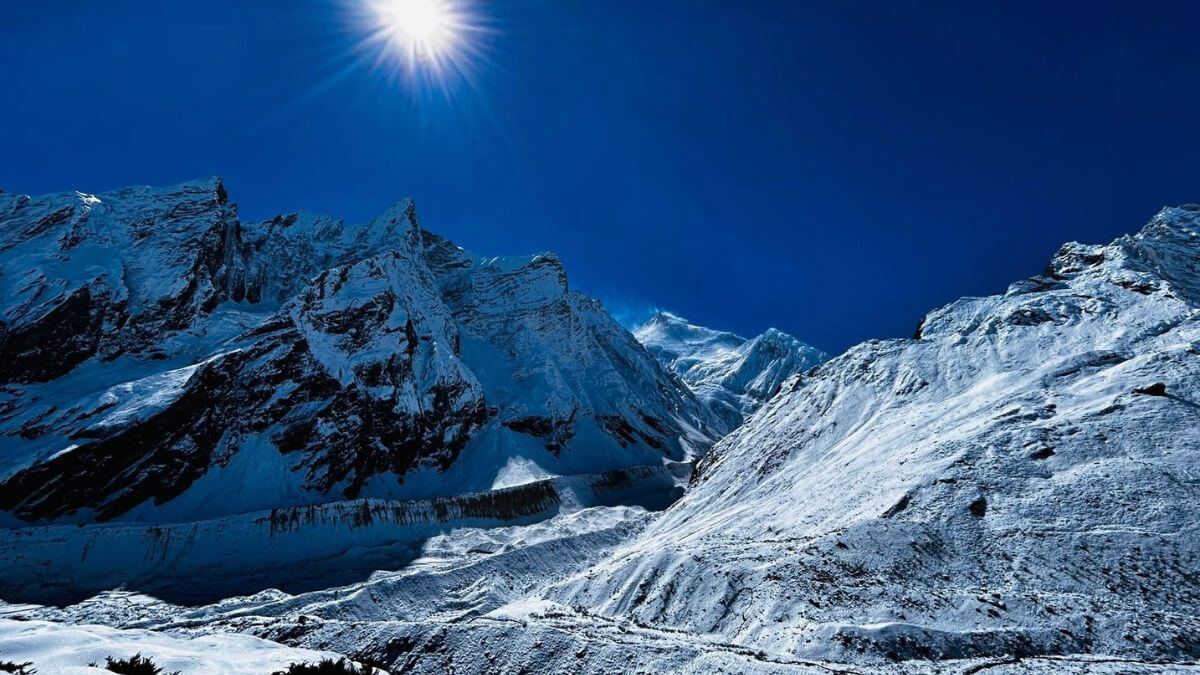
On the other hand, winter brings freezing temperatures. Most of the higher altitude is covered with snow and ice. The trails are slippery and can be dangerous to cross, especially the Larkya La Pass. At higher altitudes, especially around the base camp area, accommodations remain closed due to low temperatures, limiting options. Mostly, if any trekkers get sick, it is difficult to mount an emergency rescue in such conditions. So, beginner trekkers are requested to avoid off-season treks and to trek during the peak season when the weather is favorable. The average winter temperature can drop to -25 degrees Celsius at night in the high-altitude areas.
Still unsure which Manaslu trek fits you? Talk to our team for free guidance.
Things You Need to Know
Permits and Regulations
Trekkers need three permits to complete the Manaslu Base Camp trek. Government officials are stationed at various checkpoints along the route to verify permit acquisition. Failure to achieve any of the three permits will not allow entry further. Similarly, all trekkers must have a government-licensed guide to trek to Manaslu Base Camp. The Manaslu Base Camp permit is as follows:
Manaslu Restricted Area Permit (RAP)
The Manaslu Restricted Area Permit is required from Jagat to Sama Gaon. As the area is designated a restricted area, trekkers must obtain a permit through a trekking agency. The price of the Manaslu RAP depends on the number of trekking days between Jagat and Dharapani. You can get the license from the Department of Immigration in Kathmandu.
Cost of the Manaslu Restricted Area
- September to November: USD 100 per person for the first week and an additional USD 15 per person per day after the first week.
- December to August: USD 75 per person for the first week, plus an additional USD 15 per person per day thereafter.
Annapurna Conservation Area Permit (ACAP)
You will require the ACAP permit from Dharapani to Besisahar, that is, until you exit the Annapurna Conservation Area. The cost of ACAP is USD 30 per person, year-round. There is no time frame or price change for the number of days you spend inside the conservation area. You can obtain the ACAP from the Nepal Tourism Board in Kathmandu or Pokhara.
Manaslu Conservation Area Permit (MCAP)
You will require the MCAP from Philim, which marks the start of the Manaslu Conservation Area. The cost of MCAP is USD 30 per person, year-round. There is no time frame or price change for the number of days you spend inside the conservation area. You can obtain the MCAP from the Nepal Tourism Board in Kathmandu.
Packing Essentials: What to Bring?
Here is a list of items you need to bring for the Manaslu Base Camp Trek.
General |
|
Upper Body |
|
Torso |
|
Lower Body |
|
Hands |
|
Feet |
|
Undergarments and inner wears |
|
First Aid Kits and Medications |
|
Accommodation and Food on the Trek
Teahouses: These are the most basic accommodations in the Manaslu region and are available throughout the area. The tea houses provide basic bedding, but don't have attached bathrooms. The bathrooms are one in each story or sometimes outside of the teahouses. A single room in a tea house has two single beds, a table, and a lamp.
Lodges: These are comparatively superior accommodation options to teahouses and are more expensive. Lodges offer opportunities to blend in with locals and savor local cuisine. Most lodges in the Manaslu area provide hot showers and Wi-Fi; however, with all these amenities, trekkers do need to pay an additional fee.
Luxury houses: Luxury accommodation is the highest tier available in the Manaslu region. However, luxury houses are the most expensive option. They are available only in some of the larger villages along the Manaslu trekking route. Luxury houses offer electricity, Wi-Fi, hot showers, and private bathrooms, providing the ultimate form of relaxation.
Typical Food and Beverage Options in the Manaslu Region
- Breakfast: Tibetan bread, Pancakes, Soup, Eggs, Potatoes, Porridge, Cereals, Paratha, Chapati, and Mixed veggies.
- Lunch and Dinner: Spring rolls, Pasta, Curry and rice, Thukpa, Thenduk, Macaroni, Spaghetti, Chowmein, Mo Mo, Pizza, Potato dishes, Noodles, Popcorn, Pakoda, Pork chili, Pork fry, Mushrooms, Papad, Salad, and more.
- Desserts include Chocolate Pudding, Apple Pie, Rice Pudding, Apple Fritters, Custard Pudding, Pumpkin Pie, and Curd.
- Beverage: Black Tea, Milk Tea, Tibetan Tea, Ginger Tea with Honey, Hot Chocolate, Hot Lemon, Mint Tea, Black Coffee, Canned Juice, Red Bull, Coke, Fanta, Sprite, Beer, Local Raksi, Vodka, Whiskey, Rum, and others.
Note: Do not drink alcohol or excessive coffee during the trek, as it can cause dehydration, which can ultimately lead to altitude sickness.
Summing Up
The Manaslu Base Camp Trek is one of the most rewarding journeys in the Himalayas of Nepal. The opportunity to view the eighth-highest mountain in the world and immerse oneself in a remote wilderness is a must for adventure enthusiasts. Every step along the way reveals an authentic Nepalese mountain lifestyle. From traditional valleys, roaring rivers, cascading waterfalls, and majestic mountains to cultural monasteries, stupas, mani walls, prayer wheels, and prayer flags, Manaslu has it all.
Whether you are a beginner or an experienced trekker, the Manaslu Base Camp itinerary can be customized accordingly. If you want a longer version with extended trips or a short trek with limited time, the Manaslu Base Camp can be reached as per your expectations.
Pack smart, trek safe, and let Nepal Trekking Planner guide you to the Manaslu Base Camp. Let us be the bridge between you and a fantastic adventure that awaits in the near future.
FAQs
What Is the Best Way to Reach Manaslu Base Camp?
The best way to reach Manaslu Base Camp is to take a bus or a private jeep to Machha Khola or Soti Khola. After reaching Machha Khola or Soti Khola, continue on the Trek towards Sama gaon to ultimately get the Manaslu Base Camp.
How Challenging Is the Manaslu Base Camp Trek for Beginners?
The Manaslu Base Camp Trek is challenging, but achievable. Trekkers need to walk 5-8 hours daily over varied terrain while carrying a backpack. But with enough preparation, proper acclimatization, and trekking in the right season, beginners can have a safe and enjoyable experience.
What Is the Total Trekking Distance to Manaslu Base Camp?
The total trekking distance to Manaslu Base Camp is approximately 177 kilometers (110 miles), and the Trek takes about 12-14 days to complete.
How many days does it take to complete the Manaslu trek?
The Manaslu Trek takes about 12-14 days to complete; however, if you add Tsum Valley, the total trekking days will be about 20-24.
Do I Need a Special Permit to Trek to Manaslu Base Camp?
Yes, you need a Manaslu Restricted Area Permit (RAP) for trekking to Manaslu Base Camp. Other permits, including the Annapurna Conservation Area Permit and the Manaslu Conservation Area Permit, are also necessary to complete the Trek.
What Is the Best Time of Year to Trek to Manaslu Base Camp?
The best times of year to trek to Manaslu Base Camp are spring and autumn. Spring in Nepal lasts from March to May, and autumn lasts from September to November. During this time, the weather is stable and the skies are clear, providing a comfortable walking experience.
What kind of Accommodations Are Available on the Trek?
From basic options like teahouses to moderate options like lodges to luxury options like resorts, there are varied accommodation options on the Manaslu Base Camp trek.
Can I Do the Manaslu Trek Without a Guide?
No, you cannot do the Manaslu Trek without a guide. The Government of Nepal mandates hiring a licensed guide for the Manaslu trek. If not, entry is not permitted.
What Training Is Recommended Before Attempting the Trek?
Exercises, including cardiovascular activities such as swimming, running, and jogging, and strength training such as squats, lunges, planks, and weighted backpack training, are recommended before attempting the Trek.



